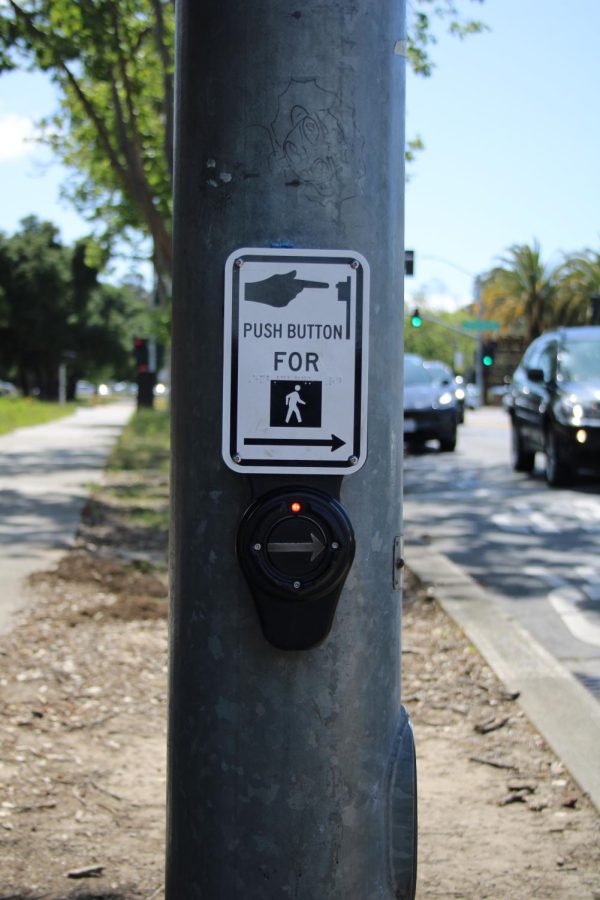Crossing the yellow line
Urging civil safety at Churchill crossing
My phone chimed as I walked into my first period class. It was a message from my neighbor. It read:
I got hit by a car.
My first thought was that he was joking. He wasn’t.
When I saw him later that day I asked if he was okay. Although he brushed it off and laughed shakily, his bike couldn’t lie. The bend of the left pedal suggested that he was not going home without struggle.
I recall all the times I have crossed Churchill Avenue on my way to Palo Alto High School. Deliberately avoiding the train tracks to save time, I see the football field in front of me from a mile away.
Whether on foot or biking, I get nervous when taking this route. It’s not because I have to speed walk across the street or pedal faster as cars continue to make their turns, but because I’m bracing for the ghost of an impact that I’ve felt in my mind so many times before.
On all four corners of the street there’s a button you can press. Every time you have to turn your head to see through the green hedge of the house. I didn’t know this existed until a few months ago. I really wish they would trim it.
The color red is universal for stop. Yellow is a passive color that if I could put into a single word, would mean ‘maybe’ or ‘please’. A stop sign is only taken seriously when carried forward by the crossing guard, because no one betrays this trust. No one thinks, I’m going to ignore the crossing guard.
When I first found out about this button, I pressed it. The yellow blinking lights turned on. But still, this did nothing to quell the morning traffic. The cars kept on whooshing by, ignoring the lights as if disoriented. I haven’t pressed it since, not when I can save 10 extra seconds.
Students tend to be reckless. Seemingly without a care of the collective of both novice and experienced drivers surrounding them. There’s less caution when late to school, but there should be prior acknowledgement that being early can lead to harm.
Undertaking new measures for civil safety especially for high schoolers is necessary at the start and end of the school day. The Fremont Police describes the duties of a crossing guard to be attentive towards students and controlling traffic around them.
Living close to a middle school allows me to see the clear impact. They make students confident.
Groups tend to stick together, breaking away from their conversations to, for the briefest of moments, to say happy Monday’s to the ones in neon jackets.
Much like how students pass through Churchill daily, students also go through the California Avenue underpass. Given the recent incident of an alleged sexual assault in the underpass reinforces this need for monitoring. And with the amount of extracurricular activities held at Palo Alto High School, a variety of students stay on campus until 9 p.m. So why hasn’t increased safety happened yet?
Traffic at Churchill should become controlled and slowed down for all students making their way to school every day. I should not have to doubt my decision on whether to bike to school or not. Safety in adding crossing guards would be a benefit in the future.
